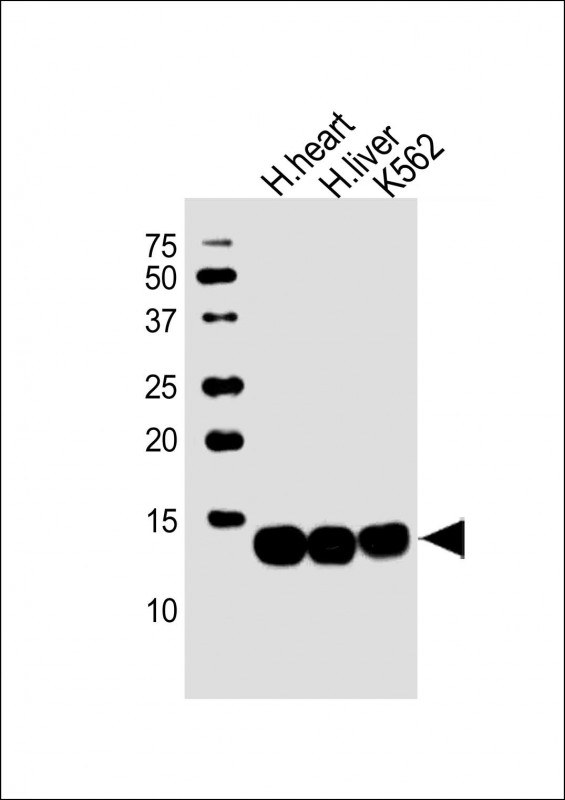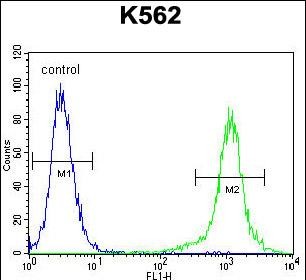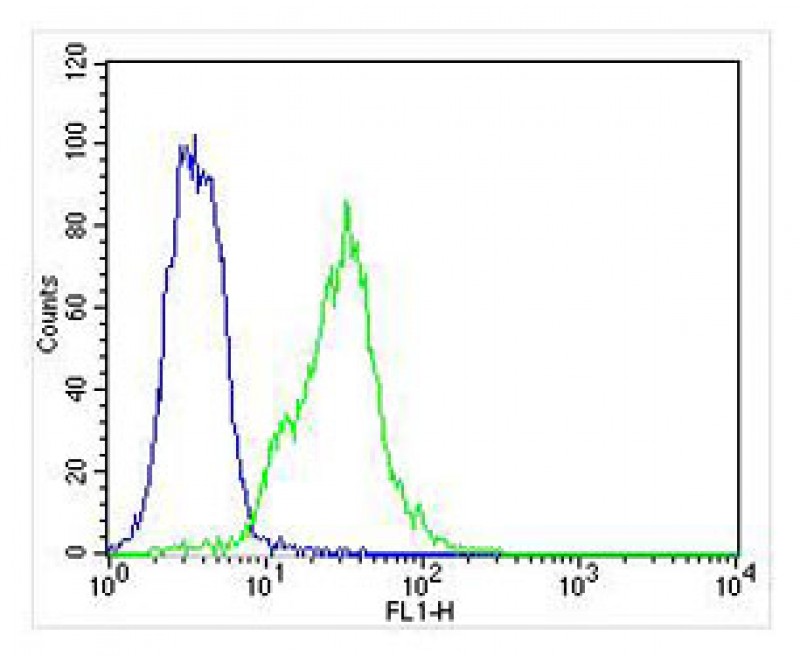HBB Antibody (C-term)
Affinity Purified Rabbit Polyclonal Antibody (Pab)
- SPECIFICATION
- CITATIONS: 3
- PROTOCOLS
- BACKGROUND

Application
| WB, FC, IHC-P, E |
|---|---|
| Primary Accession | P68871 |
| Other Accession | P04246, P02101, P02128, P06643, P06642, P02042, P02057, P02112, P02081, P11517, P02089, P02091, P02088, NP_000509.1, P68056, P02083, P02062, P02075 |
| Reactivity | Human |
| Predicted | Mouse, Rat, Sheep, Bovine, Chicken, Horse, Rabbit, Pig |
| Host | Rabbit |
| Clonality | Polyclonal |
| Isotype | Rabbit IgG |
| Calculated MW | 15998 Da |
| Antigen Region | 80-107 aa |
| Gene ID | 3043 |
|---|---|
| Other Names | Hemoglobin subunit beta, Beta-globin, Hemoglobin beta chain, LVV-hemorphin-7, Spinorphin, HBB |
| Target/Specificity | This HBB antibody is generated from rabbits immunized with a KLH conjugated synthetic peptide between 80-107 amino acids from the C-terminal region of human HBB. |
| Dilution | WB~~1:2000 FC~~1:25 IHC-P~~1:10~50 E~~Use at an assay dependent concentration. |
| Format | Purified polyclonal antibody supplied in PBS with 0.09% (W/V) sodium azide. This antibody is purified through a protein A column, followed by peptide affinity purification. |
| Storage | Maintain refrigerated at 2-8°C for up to 2 weeks. For long term storage store at -20°C in small aliquots to prevent freeze-thaw cycles. |
| Precautions | HBB Antibody (C-term) is for research use only and not for use in diagnostic or therapeutic procedures. |
| Name | HBB |
|---|---|
| Function | Involved in oxygen transport from the lung to the various peripheral tissues. [Spinorphin]: Functions as an endogenous inhibitor of enkephalin-degrading enzymes such as DPP3, and as a selective antagonist of the P2RX3 receptor which is involved in pain signaling, these properties implicate it as a regulator of pain and inflammation. |
| Tissue Location | Red blood cells.. |

Provided below are standard protocols that you may find useful for product applications.
Background
The alpha (HBA) and beta (HBB) loci determine the structure of the 2 types of polypeptide chains in adult hemoglobin, Hb A. The normal adult hemoglobin tetramer consists of two alpha chains and two beta chains. Mutant beta globin causes sickle cell anemia. Absence of beta chain causes beta-zero-thalassemia. Reduced amounts of detectable beta globin causes beta-plus-thalassemia. The order of the genes in the beta-globin cluster is 5'-epsilon -- gamma-G -- gamma-A -- delta -- beta--3'.
References
Bailey, S.D., et al. Diabetes Care 33(10):2250-2253(2010)
Zhou, D., et al. Nat. Genet. 42(9):742-744(2010)
Onakoya, P.A., et al. Ear Nose Throat J 89(7):306-310(2010)
Belisario, A.R., et al. Acta Haematol. 124(3):162-170(2010)
Prakobkaew, N., et al. Acta Haematol. 124(2):115-119(2010)
If you have used an Abcepta product and would like to share how it has performed, please click on the "Submit Review" button and provide the requested information. Our staff will examine and post your review and contact you if needed.
If you have any additional inquiries please email technical services at tech@abcepta.com.














 Foundational characteristics of cancer include proliferation, angiogenesis, migration, evasion of apoptosis, and cellular immortality. Find key markers for these cellular processes and antibodies to detect them.
Foundational characteristics of cancer include proliferation, angiogenesis, migration, evasion of apoptosis, and cellular immortality. Find key markers for these cellular processes and antibodies to detect them. The SUMOplot™ Analysis Program predicts and scores sumoylation sites in your protein. SUMOylation is a post-translational modification involved in various cellular processes, such as nuclear-cytosolic transport, transcriptional regulation, apoptosis, protein stability, response to stress, and progression through the cell cycle.
The SUMOplot™ Analysis Program predicts and scores sumoylation sites in your protein. SUMOylation is a post-translational modification involved in various cellular processes, such as nuclear-cytosolic transport, transcriptional regulation, apoptosis, protein stability, response to stress, and progression through the cell cycle. The Autophagy Receptor Motif Plotter predicts and scores autophagy receptor binding sites in your protein. Identifying proteins connected to this pathway is critical to understanding the role of autophagy in physiological as well as pathological processes such as development, differentiation, neurodegenerative diseases, stress, infection, and cancer.
The Autophagy Receptor Motif Plotter predicts and scores autophagy receptor binding sites in your protein. Identifying proteins connected to this pathway is critical to understanding the role of autophagy in physiological as well as pathological processes such as development, differentiation, neurodegenerative diseases, stress, infection, and cancer.




